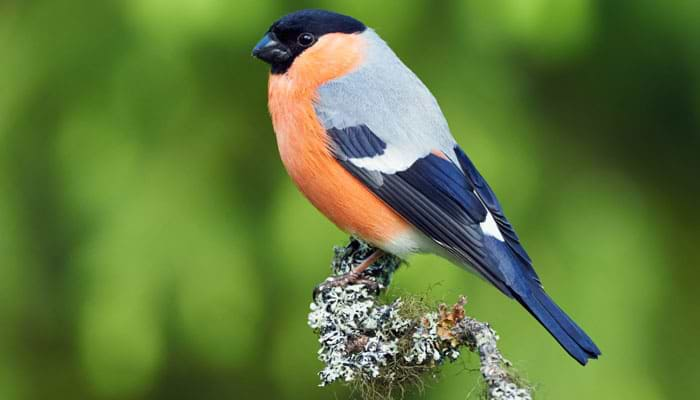
© lucaar / Adobe Stock
Currently the subject of a study by the British Trust for Ornithology, as a result of its declining population caused by a loss of its natural breeding grounds, the beautiful bullfinch is a colourful wild bird that lives in a variety of habitats across the UK. It was once widely kept as a pet, as people loved its tuneful singing voice. Today, however, it is more likely to be found in its natural environment than in a gilded cage in the house. Pet bird In years gone by (particularly in the 19th century), the bullfinch could be found in many a parlour across the UK. In fact, people would play the flute to encourage the bird to sing to entertain guests. Its birdsong was able to mimic a flute or whistle, which enhanced its popularity as a pet. Today, in an era when it's considered less ethical to keep a wild bird in a cage, the bullfinch is struggling to retain its foothold in nature - with the population 36% lower than it was in 1967. The Beyond the Maps research programme, run by the British Trust for Ornithology, suggests the bullfinch has lost a lot of its habitat to agricultural growth. Listed as an "amber" species, that means its population has declined but it is starting to recover, although it's still not safe. Unique features The bullfinch is so-called because it has a bull-headed, front-heavy appearance. It's one of the larger finches in the family, with a chunky head and compact body. Both the male and female birds have a black face and head, with a grey back, black tail and white rump. However, the male is brighter than the female in general. The main difference is that the male has a bright, reddish-pink underbelly, but the female's is a greyish-buff, neutral shade. Juvenile birds of both sexes have a brown head and face before their brighter adult colouring appears. When mature, the bullfinch grows to around 6.4 inches long. Species' origins The Swedish zoologist Carl Linnaeus was the first person to officially list the bullfinch as a species in the tenth edition of his 1758 book, Systema Naturae. This was one of his major works that launched the practice of scientifically naming animals. As a UK-native bird, the bullfinch is otherwise known as the Pyrrhula Pyrrhula. Its Latin name is derived from the Greek word "purrhoulas", which literally translates to “worm eating bird”. The species covers a large area, stretching from Ireland, across northern Europe and all the way to Japan. The UK-resident bullfinches tend to be smaller than the Scandinavian variety. Birds living further north are generally heavier than their southern hemisphere counterparts. Habitat and diet The bullfinch commonly inhabits woodland areas, agricultural farmland, coniferous forests and parks. They will live in blackthorn and hawthorn hedging and in orchards. It is a shy species, seldom found in areas of open space, such as coastal environments. It will venture into gardens, although it isn't a regular visitor, according to the British Trust for Ornithology's Birdwatch scheme, with only 10% of participants reporting seeing a bullfinch in their own garden. In the wild, the bullfinch eats a diet of mostly seeds and plants, such as ash, elm and nettles. They eat buds and fruits from trees, but they particularly enjoy fleshy fruits, such as raspberries. They forage for worms and insects, but mainly to feed their young. If they do venture into your garden, they will eat sunflower seeds and raisins from a bird table. The bullfinch makes its nest from twigs, moss and lichens and a bonded pair will lay up to five eggs, on two or three occasions, during the breeding season. Studies show bullfinches mate for life - breeding season takes place from April through to August. Although small flocks of bullfinch appear together at feeding sites during the winter months, they are normally seen in pairs, or individually. Bullfinch can also be seen travelling in small family groups. Data from the British Trust for Ornithology reveals this beautiful bird is gradually starting to recover in terms of population, with breeding gains in some regions of Scotland, in western Ireland and on the Inner Hebrides islands. Enjoy the milder spring weather and take a bird watching walk through Britain's countryside. MA Griggs' country store, nestling in beautiful Cornwall, stocks many top clothing brands, including Joules, Hunter, Barbour, Timberland and more. Check out our website for further information on our wide range of products, or come and see us at our St Austell store!




